The Dominys made their home in East Hampton, and soon became indispensable members of the community. In addition to the work they did as craftsmen, they took part in a variety of activities including fishing and dancing, politics and public service, and served in the local militia during wartime and peace.
Click on the highlighted areas on the map to learn more about East Hampton
(Map is not responsive with Internet Explorer browser)
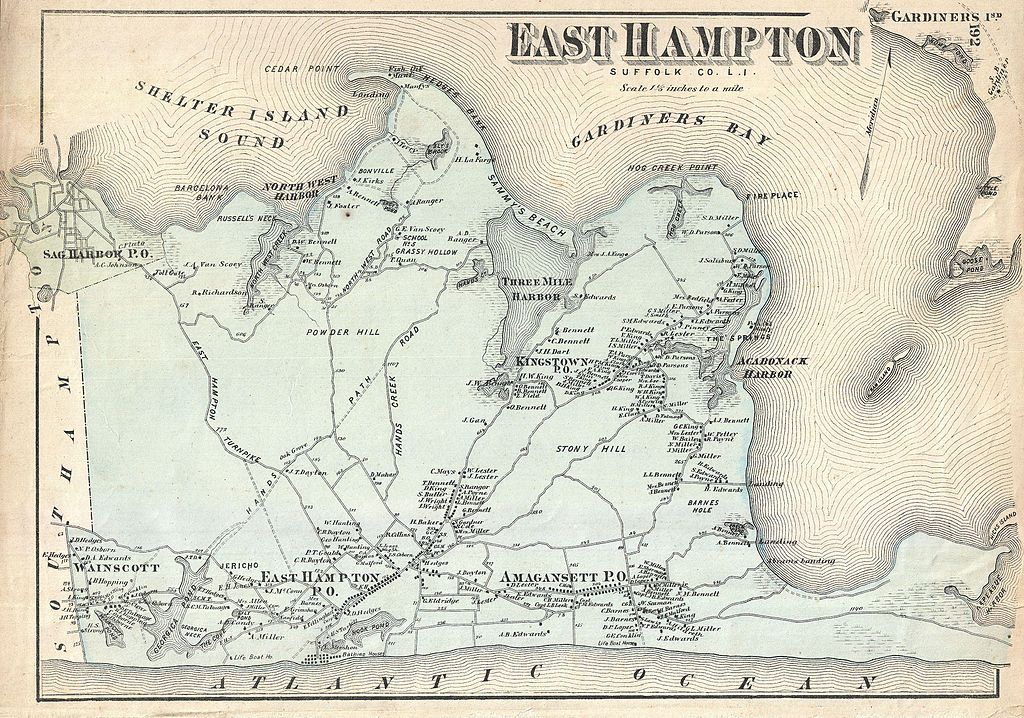
Dominy Homestead
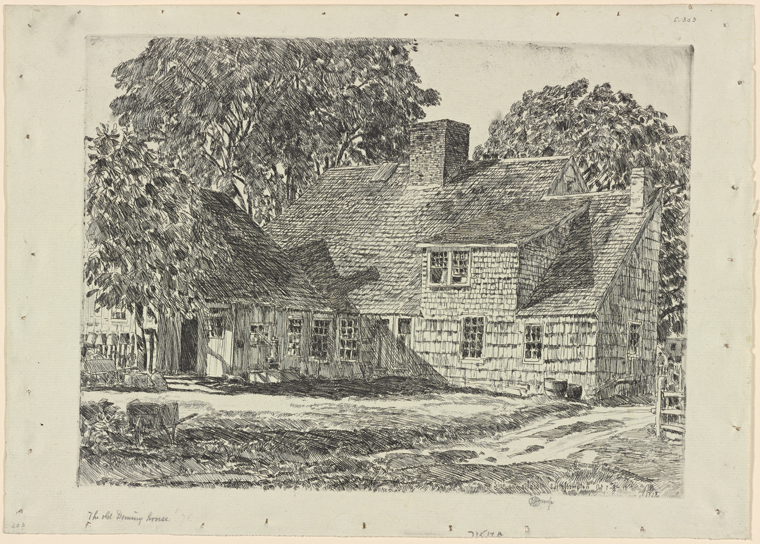
Located on North Main Street in East Hampton, the Dominy homestead was adapted over its lifetime to support over three generations of the Dominy family and accommodate their woodworking and clockmaking businesses. Although the house was torn down in the mid-twentieth century, the East Hampton Historical Society plans to rebuild the house in the near future.
Image Credit: Childe Hassam, The Old Dominy House (East Hampton), 1928. Smithsonian American Art Museum.
Deacon David Talmage
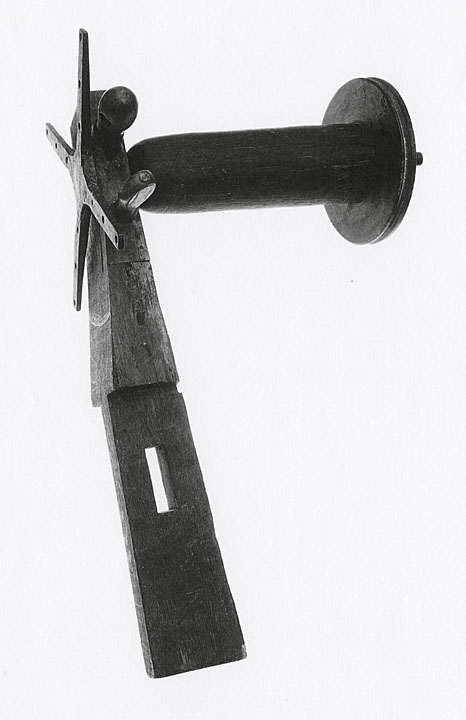
Deacon David Talmage was a frequent customer of the Dominy family as well as a supplier of metalwork objects such as furniture hardware and tools. In 1795, Talmage made this Arbor & Cross for Nathaniel IV, enabling him to turn stands on the great wheel lathe. The Talmage family was one of East Hampton's earliest families and owned land on 8 Haynes Lane.
Image Credit: Winterthur, 1957.26.370
Hook Hill
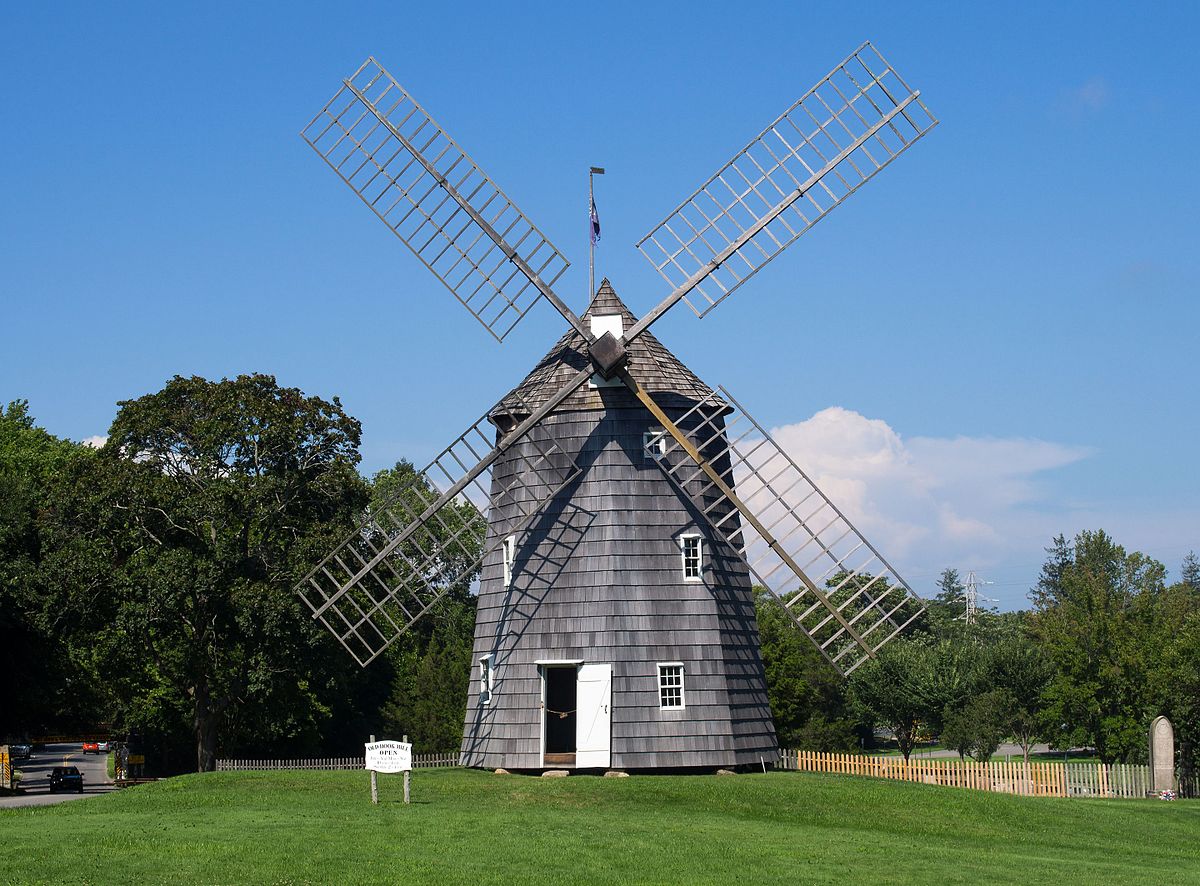
In 1806 Nathaniel V built a wind-powered gristmill in the East Hampton enclave of Sandy Hook (later truncated to “The Hook”), where it remained in continuous operation until 1908. In 1939 his great-grandson, Charles Mulford Dominy, restored the structure for the town, ensuring its preservation as an important local landmark.
Image Credit: Library of Congress
Northwest Harbor
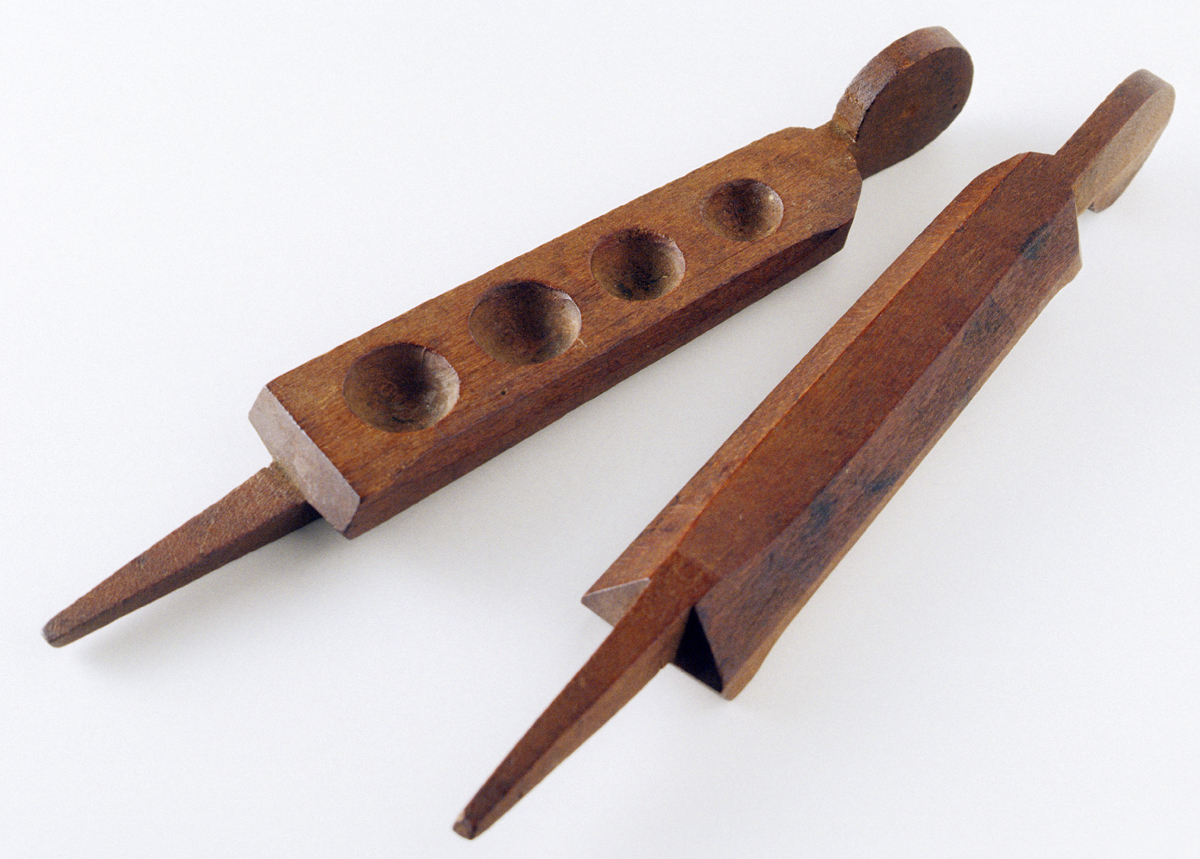
In the 1760s, Nathaniel IV joined neighbors in protesting British taxation by signing an East Hampton non-importation petition. He made shot and bullet molds for, and participated in, the local militia company organized to defend the township when the British occupied New York during the American Revolution. Only a few miles away, Northwest Harbor was the site of Meigs Raid during which Americans sucessfully defeated 90 Loyalists.
Image Credit: Bullet mold pattern, 1957.0084.003
First Presbyterian Church
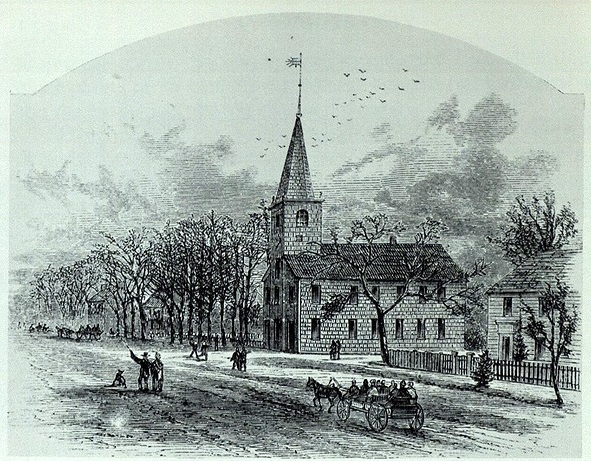
Nathaniel Dominy IV and Nathaniel Dominy V were baptized in the second building of the First Presbyterian Church, constructed in 1717. No indication is given of Felix Dominy's religious affiliation; but while he lived in East Hampton, he undoubtedly attended services with his grandfather and father at the Presbyterian Church.
Image Credit: W.W. Munsell & Co., History of Suffolk County, New York, with Illustrations Portraits and Sketches, 1882.
Clinton Academy
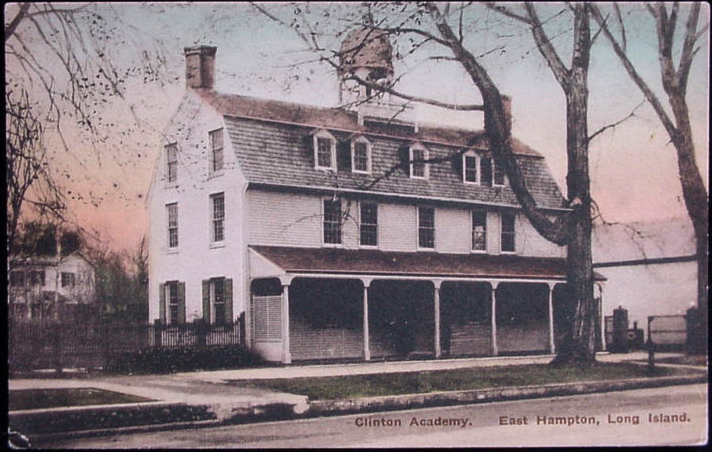
Clinton Academy, the first college preparatory school on Long Island, was founded at East Hampton in 1785. By 1815 its enrollment had reached 156 pupils, and it is entirely possible that both Nathaniel Dominy V and Felix Dominy received schooling there. Felix Dominy clearly believed in the value of a good education; two receipted tuition bills for the schooling of his son (Nathaniel VII [1827–1910]) in 1833 and 1834 so testify.
Image Credit: Clinton Academy, East Hampton NY, c. 1920s, colored postcard. Detroit Publishing Company.
Three Mile Harbor

Fishing, hunting, and occasional jaunts to pick ripe fruit were diversions close at hand for the Dominy craftsmen. These pastimes were certainly enjoyed by Nathaniels IV and V and their families at an earlier period. Entries in Felix's weather journal show that between May and the end of July, 1822, he caught twenty-six fish at Three Mile Harbor.
Image Credit: Thomas Moran, , 1837-1926, etching, "Three Mile Harbor", 1880. Gilcrease Museum.
General Miller's House
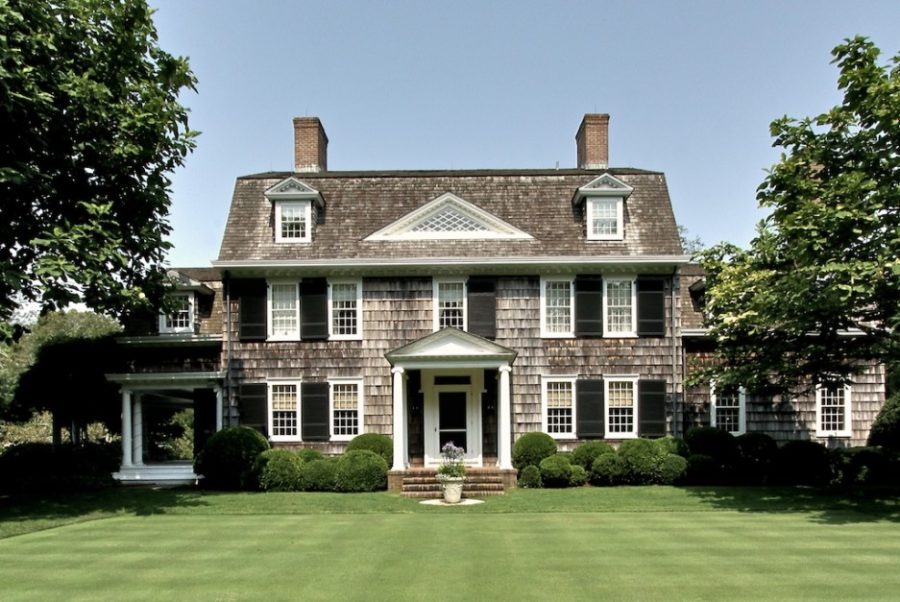
Felix Dominy enjoyed the popular dances of his day. During the 1830's a dancing school was held at General Jeremiah Miller's home (built in 1799) with instruction by a French master. Felix paid $1.25 for "tuition in the art of Dancing" and listed the dances he had learned plus the instructions for performing them.
This Georgian house was moved back on its lot and remodeled in the colonial style in 1885. It is currently a private residence.
Lily Hill Burial Ground
Many members of the Dominy family are buried at Lily Hill Cemetary, the site of a former farm.
Mulford Farm
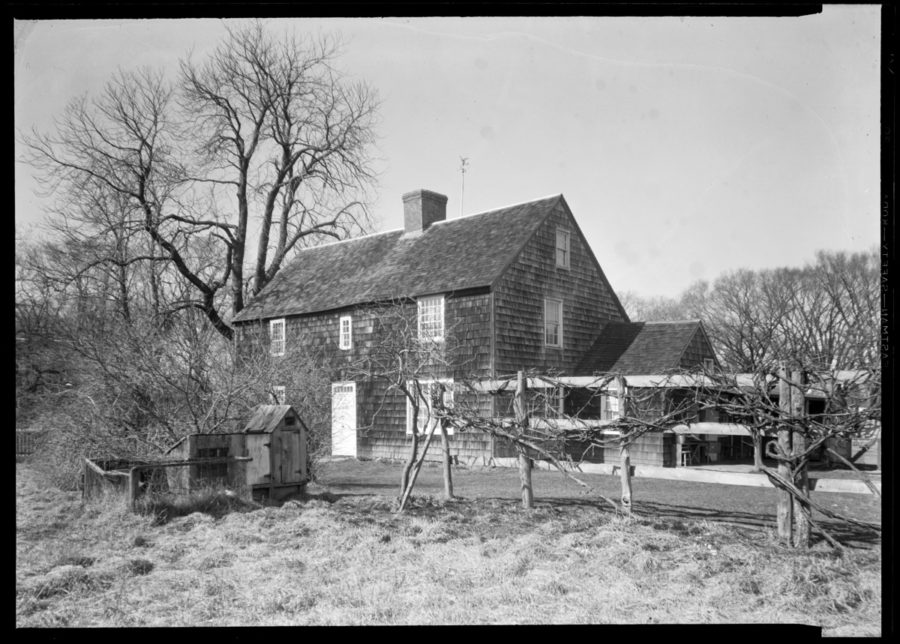
Mulford House & Farm is one of the oldest homes in East Hampton, dating to 1680. Several generations of the Mulford family lived in this house since 1712 and commissioned furniture from the Dominy family, including beds, writing desks, and a breakfast table. Some of this furniture can today be viewed at the Mulford Farm Museum, part of the East Hampton Historical Society.
Image Credit: Historic American Building Survey, c.1940
Pantigo Windmill

Samuel Schellinger built the Pantigo Windmill for Huntting Miller in 1804. Nathaniel Dominy V made frequent repairs to the mill, including one for Miller in 1821 and another for subsequent owner Captain William Hedges in 1834. Dominy charged Hedges to "put in shaft Cogs and Rounds." In 1865, Nathaniel Dominy VII purchased the mill and attempted to continue operating it in 1878. The following year, a storm destroyed many of the parts and Dominy ceased his efforts. The mill was moved from its original location on Pantigo Road to its current location behind the historic "Home Sweet Home" house in 1917. The Village of East Hampton acquired the structure in the 1970s and have made major repairs.
Image Credit: Library of Congress, c.1978.
Gardiner Mill

Nathaniel Dominy V built Gardiner Mill for John Lyon Gardiner in 1804 at a cost of more than 528 pounds. It operated only a short distance away from Pantigo Mill (in its original location) until 1900. It remains on James Lane in East Hampton.
Image Credit: Harvey Ginsberg Postcard Collection, Courtesy of East Hampton’s Long Island Collection.
The Dominys' workshop was in East Hampton, but their reach extended across Long Island. In addition, Connecticut was a short distance across Long Island Sound, and they performed a number of services for customers there.
Click through the map below to find out more.
Clients of the Dominy family extended as far as New Haven. As a result, their furniture sometimes referenced the styles characteristic of Connecticut cabinetmakers.
On March 15, 1777, the Dominys recorded an order for a clock to be made for Captain Levi Riley of Hartford. In addition to serving customers in this area, the Dominys also purchased cast-steel axes and other edge tools from Collins & Company, founded in 1826.
In 1783 Nathaniel Dominy IV made two timepieces for James Hazelton of Haddam, Connecticut. Hazelton was billed a total of £13 for both clocks.
Nathaniel Dominy IV frequently repaired watches for the Beckwith and Lester families of Lyme. The Beckwiths are described as "clothiers" in Nathaniel's accounts from 1800 to 1813.
In 1775, Nathaniel IV was commissioned by Samuel Babcox of Stonington to repair a clock and watch.
On November 7, 1799, Nathaniel IV billed David Gardiner of Flushing £36 for "1 clock." The bill indicates that David, like his brother, John Lyon Gardiner, obtained the clock face in New York.
By 1828, Felix Dominy must have been convinced that his future livelihood would not result from clock making or clock and watch repairs. It was in 1828 that Sarah Nicoll of Islip, Long Island, canceled her purchase of a “good and neat clock without any finery about it” from Felix because she considered his $80 price for such a clock, “a piece of folly”
On May 5, 1800, Nathaniel V billed John Lyon Gardiner (1770–1816) £20.8s. for making this desk-and-bookcase. The charge included crating and carting it to a waterfront area of East Hampton Village known as Fireplace and loading it onto a sloop bound for Gardiner’s Island. The most ambitious—and most expensive—piece of furniture ever made in the Dominy shop, it took approximately eighteen days to build.
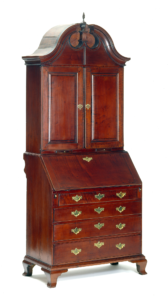
The Dominys lived and worked in East Hampton. Proximity to a variety of markets and relatively little competition enabled the family to sustain a comfortable living for three generations.
In 1791, Nathaniel V billed Joseph Hedges of Patchogue the sum of £38 for a "Repeating, Alarm, Tell-Tale Clock."
In 1820, the Dominys made a couple of trips to Moriches, where they repaired a clock for Josiah Smith and made him a cherry case.
In addition to serving clients in Riverhead, the town was also the site of public executions as late as 1835. That year, Felix Dominy attended one "in full uniform" as a member of the militia at the invitation of General David Williamson. General Williamson added that the request for the militia's attendance had come from the Suffolk County sheriff and that "two Companies of horse, two Companies of Artillery, one Company of Infantry With the band of Musick" were expected to be present.
It is likely that Nathaniel IV's work for customers in Connecticut was delivered and picked up in Southold on the "North Fork" of Long Island. The connection with Southold continued when Nathaniel V was asked to supply the dimensions for a mill to be erected across Gardiner's Bay in Southold, New York after the successful construction of Hook Mill.
In 1832, James C. Norton of Quogue wrote to Felix Dominy asking if he would make a gunbox. Though at the time Felix was mostly doing metalworking while Nathaniel V was concerned with woodworking, the division of labor was not hard and fast.
Because of the survival of furniture patterns in the Dominy Tool Collection it can be shown that in a conservative area of English influence, such as Southampton, Nathaniel Dominy V made "Hudson Valley" side chairs like the one from about 1790 to 1830.

The Dominys frequently traveled to Sag Harbor for business and trade. Felix earned extra income by supplying clock components to Elijah Simons, a contemporary clockmaker who first advertised in the village of Sag Harbor in 1804. However, as Sag Harbor grew in importance during the first half of the nineteenth century, goods brought by steamboat meant the amount of work that fell to Felix and his father, Nathaniel Dominy V, dwindled. These changes eventually caused Felix to reevaluate his position as a craftsman.
Felix Dominy signed a contract to cover the dome of the Montauk Lighthouse in 1833. He covered it with "thirty two ounce copper" and painted it "with a good and substantial coat of paint." The work was to be completed by July 1, 1834; Felix was to receive $230 and be allowed to retain the old copper removed from the dome. According to Felix's calculations, 220 feet of copper sheets and 1,080 copper rivets were used.
In October, 1811, Nathaniel V billed Nathaniel Hand (1739–1824) of Amagansett, “To Desk for Nat £8.” “Nat” was Nathaniel Hand, Jr., a son of Nathaniel Hand. Nathaniel V received a payment on June 25, 1811, of ten dollars, the equivalent of £4. The son’s payment was likely an advance toward the desk ordered for Nathaniel Hand, bringing its total cost to £12.
(Above) Fredrick W. Beers, Map of East Hampton, Long Island, New York, 1873. New York Public Library.
(Below) William Damerum, Map of the southern part of the state of New York including Long Island, the Sound, the state of Connecticut, part of the state of New Jersey, and islands adjacent : compiled from actual late surveys, 1815. Library of Congress Geography and Map Division, 97683278.
